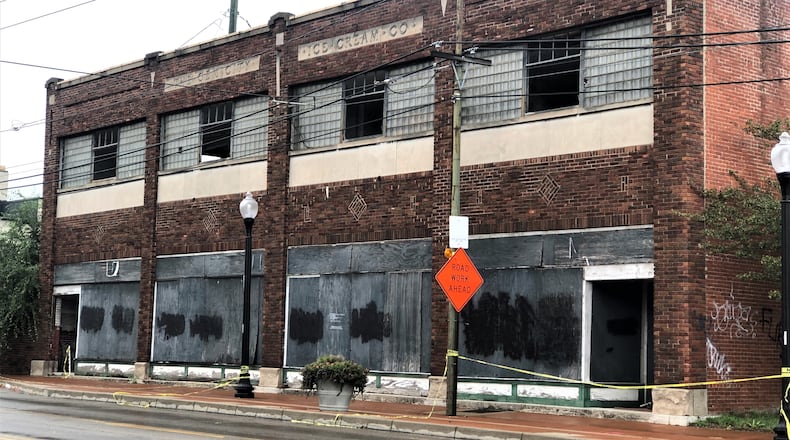“You know what happened in Florida with the building that collapsed,” said Todd Kinskey, Dayton’s director of planning, neighborhoods and development. “We (the city) are the owner of this building — we have a duty, we have a moral, if not legal obligation, to do something about this building.”
But members of a local historic preservation group and other community members said they think it’s reasonable to direct the city to seek redevelopment proposals for the property that save the building’s front façade and incorporate it into a new construction project.
They also said the city did not provide an acceptable mitigation plan to demolish the property.
“The applicant (the city) does not have the right under the ordinance to determine what an acceptable mitigation plan is,” said Monica Snow, president of Preservation Dayton Inc., which opposes the demolition. “The Landmarks Commission has that right.”
Two months ago, Dayton’s Landmarks Commission denied the city’s request to tear down the building, which was the Wright brothers’ first bike shop for less than a year in the early 1890s.
The city, however, appealed that decision to the Board of Zoning Appeals, claiming the commission erred in its application of architectural design standards.
This week, the appeals board voted 5 to 1 to reverse the denial of the Landmarks Commission and give the city the permission it needs to raze the property.
The Gem City Ice Cream Co. acquired the building in 1902 and constructed additions and made renovations over the years. The company had operations there for nearly three-quarters of a century.
The building has been empty for a couple of decades and was declared a public nuisance in 2008. Everyone agrees it is in bad shape and has lots of issues.
But the Landmarks Commission directed the city to advertise the decaying property to try to find a developer who would preserve the front façade. City officials said in 2012 that years of efforts to redevelop the building had failed.
Board of Zoning Appeals member David Brand said the Landmarks Commission did not give a clear explanation for why it denied the city’s request.
He said it’s obvious the building needs to be demolished and he called the requirement to maintain the façade an “overreach.”
Board member Patrick Martin said the city has a mitigation plan, as required by code, that notably calls for replacing the deteriorating building with new construction.
The mitigation plan includes demolishing the building, grading and seeding the site and salvaging some historic materials, like bricks and tile floor pieces and a sign on the front of the building that says Gem City Ice Cream Co.
The city plans to issue a request for qualifications from developers next month for new construction on the site, and city staff say the historic elements hopefully will be incorporated into any new project.
Martin said there’s no obvious way to abate the nuisance at this property except to knock it down, and he said the city met the necessary statutory requirements for its demolition request to be approved.
Martin also said neighbors want this blighted property gone.
“Most people who spoke in favor of tearing the building down live in the neighborhood,” he said.
Michael Jacobs, a member of the Landmarks Commission, said he doesn’t understand why the city is in such a rush to demolish this property when the city neglected it for years, allowing it to fall into increasing disrepair.
The Landmarks Commission suggested a reasonable mitigation plan that asked the city to try to find a developer who would retain the façade, said Jacobs, who recused himself when the case went before the commission because he is a member of Preservation Dayton.
“Once it’s torn down, it’s gone,” he said.
Other speakers said the city should have issued a request for proposals after the Landmarks Commission’s denial, seeking projects that save the façade.
Amos Jeffries, an insurance agent whose offices are next door at 1017 W. Third St., told the zoning appeals board that bricks are falling off the side of the building and the property attracts trespassers and undesirable activities.
He said the city could be liable in the event of a collapse or if debris falls off the building and causes harm or destruction.
“The longer we let this thing sit there, something is going to happen — it’s just a matter of time,” he said.
He later added, “I’m putting you on notice: I’m ready to sue.”
About the Author





